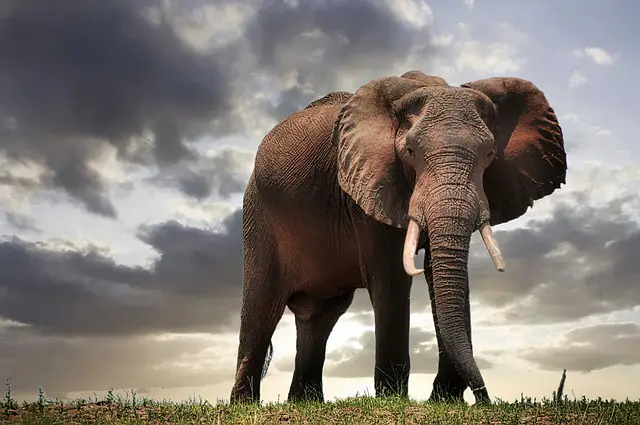Ah, Zimbabwe – three scintillating syllables which immediately conjure up captivating images of the lifegiving Zambezi river, the thunderous Victoria Falls and savannah sunsets where our brightest star melts into the horizon like molten lava, leaving the landscape cloaked in velveteen mystery.

But it’s perhaps Zimbabwe’s wildlife that brings it most alive – from the leonine king of the jungle and his powerful pride to the strange elegance of the expansive elephant, the leopard’s legendary spots, the buffalo’s billowing breath and the rhino’s tough hide and razor horn.
However, thanks to issues like poaching and environmental concerns, this brilliant Big Five of the animal world has come under untold pressure over the years from the humans it so generously shares its domain with.
But luckily, a robust wildlife preservation strategy has helped to mitigate the risks posed to the Big 5 and ensure that it’s able to survive and thrive for future generations – let’s take a look at how Zimbabwe has taken its wonderful wild animals to its heart.
Lion
As an apex predator, you might think that the mighty lion would be the last animal under threat, but according to the African Wildlife Foundation (AWF) this most magnificent Big Cat’s population has shockingly dropped by 43% in 21 years and it’s regionally extinct in 15 African countries.
Hunting these legendary creatures is sadly still an issue, although the root cause of much of the problem nowadays is human territorial expansion simply driving them out of their natural habitats in its wake.
Across Africa, preserving and establishing the boundaries of national parks is a key protective measure, as is tracking animals to monitor population numbers and movement, and introducing breeding programmes.
Elephant
Famous for their strength, stature, sensitivity and grace, Africa’s elephants are another iconic species which has come under considerable pressure in nations like Zimbabwe.
With 84,000 elephants, Zimbabwe has the world’s second-largest population of these sky-scraping creatures and it’s managed and nurtured in the five million hectares of land under the control of the nation’s Parks and Wildlife Management Authority.
Through initiatives like national aerial surveys of elephants, an excellent ranger-based monitoring system which collects and collated invaluable data and thorough vetting of any elephant relocations to institutions like zoos, it’s hoped these terrific tusked titans will continue to thrive.
Rhino
Zimbabwe is home to the world’s fourth-largest population of rare black rhinos and also hosts significant populations of southern white rhinos, both of which have come under immense pressure because of poaching.
However, dynamic preservation programmes like Conservation Travel Africa are committed to the fight against poaching and averting the bleak projection that these fascinating creatures could be extinct by 2030.
By volunteering with these types of organisations you can lend a valuable helping hand by contributing to monitoring initiatives, park maintenance and development and game park management.
Buffalo
Buffalo have the healthiest population numbers of any large herbivore in Africa, but they still face significant challenges, therefore it’s reassuring that, according to AWF, 75% of the buffalo population resides in protected areas.
Outwith game reserves and national parks, buffalo are regarded as pests by farmers and landowners because of their propensity for smashing fences and consuming crops, which means they’re often in conflict with humans and treated very poorly.
Buffalo are also threatened when their natural territories are divided by exploitative land development and in Zimbabwe and elsewhere, stricter controls attempt to combat this.
Leopard
Concerns for the second of the Big 5’s big cats, the leopard, have grown in recent years, with uncertainty over population numbers (and ethical factors) leading nations like South Africa to impose a moratorium on trophy hunting.
Some leopards are also killed in order to prevent wildlife predation, so in nations like Zimbabwe and elsewhere, there has been a focus on implementing non-lethal prevention measures such as guard dogs, herding and creating stronger livestock enclosures.
Part of the problem in trying to protect the leopard ironically lies in its evolutionary advantages as a sleek and elusive hunter which is extremely tricky to monitor, but modern technology such as camera traps can help with this.
As you can see, there are several ways in which Zimbabwe wildlife preservation benefits the Big 5 – long may they last!
